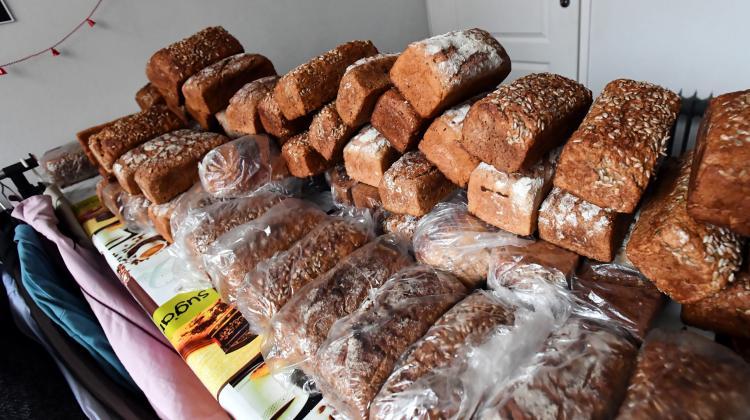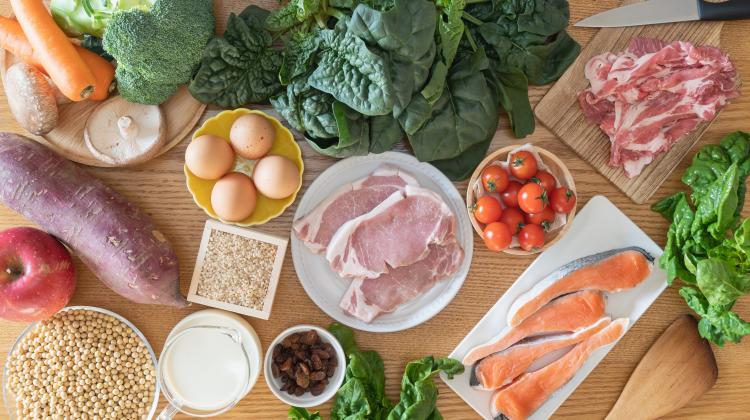Survey: 42 Percent of Poles Admit To Throwing Away Food
 Photo: PAP/ PAP/Marcin Bielecki 27.12.2018
Photo: PAP/ PAP/Marcin Bielecki 27.12.2018
Over 40 percent of Poles admit to throwing food away, according to a new report.
The survey from the Federation of Polish Food Banks shows that the main food items disposed of by 42 percent of the population is bread, cold cuts and fresh fruit which has been ‘spoiled.’
The study which was carried out on 1,115 people found that of the 42 percent who said they threw food away, 1.1 percent said they did it often, 9.7 percent did it ‘sometimes’, and 31 percent - rarely.
The study shows that the most common reason for throwing food away is the fact that it is spoiled (65.2 percent). The three main reasons also include missing the expiration date (42%) and preparation of too much food (26.5%). In the following places are too large purchases (22.2%), ill-considered purchases (19.7%), too large packaging (17%), improper storage (14.2%), poor quality purchases (10 , 8%), lack of idea how to use a specific ingredient when preparing food (10.3%).
The level of food wastage among consumers in 2019 remains at a similar level as last year. The products thrown away most often include bread (23.7 percent), meat products (12.8 percent) and fresh fruit (12.6 percent).
The guide "Zero waste in your home", contains simple tips on how to avoid wasting food.
According to its authors, the first step is rational shopping. "Even before leaving home, think about what you feel like eating in the coming days and try to plan a menu for the next few days. Also look in the cabinets and fridge - maybe you can plan meals that you can prepare from products you already have. Take upcoming trips or guest visits into account," it says. It is also recommended to buy less products more often instead of stocking up, and to avoid going shopping when hungry.
The survey also examined the purchasing trends of the respondents. The authors checked the pre-shopping steps taken, including checking the contents of cabinets and the fridge or making a list of necessary groceries.
Almost every third respondent (27%) never or very rarely prepares a shopping list. Only every tenth (10.6 percent) always does so. Only 4 out of 10 respondents (40 percent) check what products they already have in their kitchen before shopping. Shopping baskets are often filled up spontaneously: purchases of products that were not previously planned (e.g. not on the shopping list) are declared by 72.7%. respondents.
Stocking up is also a relatively common practice (61.8% declare that they do it always, usually or sometimes). Usually, however, items with a long shelf life, such as coffee or flour, are purchased in this way.
Customers most often return from the store with bread - on average every day or every other day (42.1% and 40.2%). With a slightly lower frequency, a statistical Polish consumer buys milk (16.4%), fresh fruit (14.9%) and cold cuts (12.2%).
The study also shows that some products are not bought because of their appearance, although they are fully valuable. This includes small vegetables and fruits with irregular shapes, and so-called lone bananas. 48.7% respondents never buy vegetables and fruits that only differ in appearance from the perfect-looking ones. Almost the same number (47.4%) of respondents never or rarely buy individual bananas detached from the bunch. Only 13.2 percent regularly buy lone bananas.
Consumers' knowledge of the concepts related to shelf life was also examined. The vast majority (64 percent) of the respondents considered the terms "expiry date" and "best before" to be synonymous (42.8%) or lacked knowledge on the subject (21.2%).
At the same time, over 50 percent respondents declared spending a large portion of their income on food (between 60 and 40 percent).
According to the report, the way products are stored is also important. "Dairy products, sausages and delicatessen should absolutely be stored in the fridge. All leafy vegetables can also be stored this way. Broccoli, apples and berries (raspberries, wild strawberries and blueberries) also like the cold. Keep mushrooms and sauerkraut in the fridge as well. Remember about the proper placement of products: top shelf is for preserves, jams; middle shelf is for dairy products, salads; bottom shelf is for meat, fish; drawers is for vegetables and fruit; door shelves - for milk, juice, mustard," it says.
The authors note that some fresh products should be stored at room temperature. "Under no circumstances should tomatoes be kept in the fridge as it deprives them of aroma and accelerates spoilage. Low temperatures are also bad for melons, pears, bananas, avocados and all citrus fruits."
There are also 10 universal rules for using the fridge: 1. Store products in airtight, preferably glass containers; 2. Make a note of the opening date on the packaging; 3. Do not put warm dishes in the fridge, wait for them to cool down; 4. Read the operating instructions for your refrigerator and store the products as recommended; 5. Wipe vegetables and fruits with a cloth before putting them in the fridge, and put paper towel on the selected shelf; 6. Freeze only fresh and unspoiled products; 7. In the case of freezing fruit and vegetables, blanch them first; this will help get rid of microbes; 8. Store raw and roasted meat separately; 9. Clean the fridge regularly, do not "clog" it as air flow between products is important; 10. Always check that you have closed the refrigerator door properly.
The authors of the guide note that some of the "expired" products are still fit for consumption. They explain the difference between "eat before" and "best before". "+Eat before+ means: if it is already after the date, do not eat; it is an absolute expiry date. +Best before+ means that if there are no visible contraindications, you can go ahead and eat the product. This date indicates the end of the minimum period, for which the product san be safely stored," we read.
The guide reminds the basic principles of extending the "life" of products bought in excess by freezing, pickling and pasteurisation.
"Freezing is one of the most convenient and healthiest ways to extend the product freshness. Just follow a few simple rules: 1. Never put warm food in the freezer, they can defrost other products; 2. Remember about airtight packaging: you can use resealable bags or jars; 3. Divide products into portions, then you can defrost the amount you are able to eat; 3. Do not put a jar full of soup in the freezer, liquids increase their volume and the jar can break," the authors advice.
"Pickling is a way of food preservation, previously associated only with traditional cuisine. But it is making a comeback! Not only cabbage or cucumbers, but also radishes, peppers, onions and beets end up in jars. Contrary to appearances, pickling is easy. Just remember that not even the smallest the tip of the vegetable may protrude above the brine," the authors note.
"Pasteurisation is a really simple way to store ready meals for up to a year," the guide informs. As we read, it is enough to put the dish or other products in a clean, dry and preferably warm, scalded jar and close tightly. The jar should be wrapped in a cloth, put in a pot of water and boiled for 10-30 minutes. Pasteurisation is complete when the lid of the jar become concave.
The Federation of Polish Food Banks is a public benefit organization whose goal for over 20 years has been to combat food waste and malnutrition in Poland. The 31 food banks affiliated to the federation specialize in the acquisition, transport and distribution of food products. The organizations are ready to accept and distribute any type of food, even with a short shelf life, fresh products and those requiring refrigeration, while meeting all safety criteria.
Food banks acquire an average of 80,000 tons of food per year, which they distribute to over 1.6 million people in need through 3.5 thousand aid organizations and social institutions. Food comes from producers, farmers, commercial networks and collections.
The report was prepared on the basis of a study carried out in the first half of 2019 by WULS-SGGW as part of the PROM project on a group of 1,115 people (PAP).
Author: Danuta Starzyńska-Rosiecka
dsr/ joz/ kap/
tr. RL
Przed dodaniem komentarza prosimy o zapoznanie z Regulaminem forum serwisu Nauka w Polsce.




















